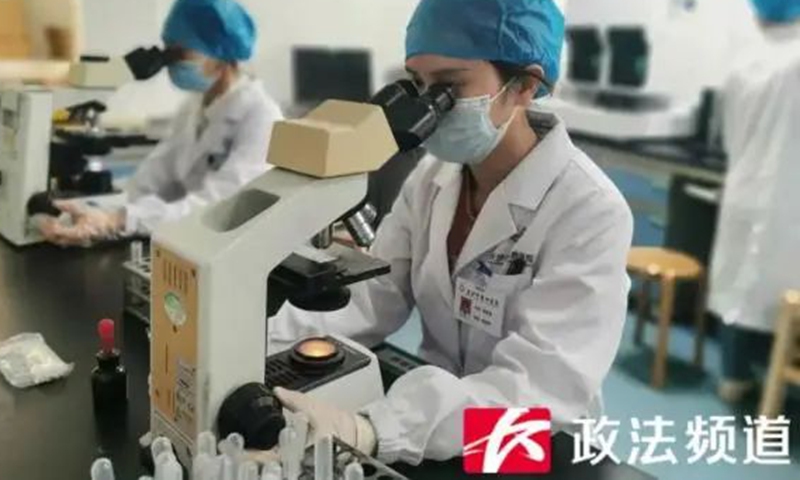‘Dinosaur blood’ type found in Central China’s Hunan Province, rarer than the ‘panda blood’

In the process of diagnosis and treatment of a pregnant mother from an ethnic minority group, deputy director of the examiner, surnamed Liu, found that the ABO blood group of the pregnant woman was inconsistent with the positive and negative stereotypes.Screenshot of Wechat account of Changsha TV
When it comes to rare blood types, one may think of RH-negative blood. With only 0.1 percent to 0.3 percent of the population having this blood running through their veins, it is therefore referred to as "panda blood." But there is another blood type that is even rarer than the "panda blood," known as "dinosaur blood," and that is the para-Bombay blood phenotype. Recently, a hospital in Changsha, Central China's Hunan Province, has found a case with the para-Bombay blood phenotype.This type of blood type was first discovered in the city of Mumbai, India in 1952. It is extremely rare in China. The proportion of people with this type of blood type in China is only one in ten thousand, and there are only 100 cases in the whole country.
In the process of diagnosis and treatment of a pregnant mother from an ethnic minority group, deputy director of the examiner, surnamed Liu, found that the ABO blood group of the pregnant woman was inconsistent with the positive and negative stereotypes. The abnormal results immediately aroused her high alert, and she immediately contacted the pregnant woman for information, and reported the case to the department director. After rechecking the serological tests of different related blood groups, it was then confirmed as the "dinosaur blood."
For pregnant women with rare blood types, once blood loss occurs during the operation, they will face problem in finding blood for transfusion. The discovery not only prepares the pregnant women for giving a smooth birth, but also provides new material for medical development.
